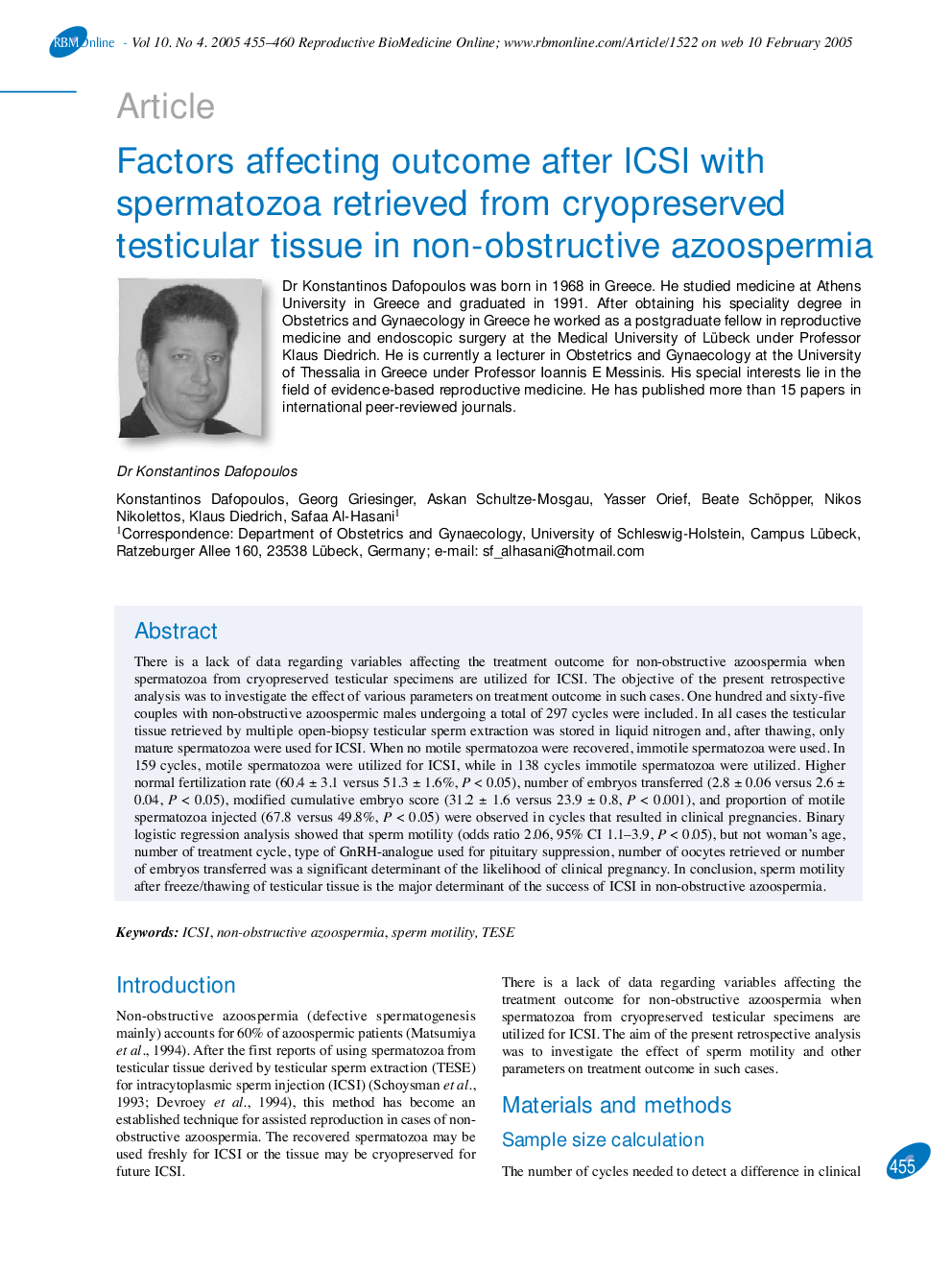| Article ID | Journal | Published Year | Pages | File Type |
|---|---|---|---|---|
| 9334723 | Reproductive BioMedicine Online | 2005 | 6 Pages |
Abstract
There is a lack of data regarding variables affecting the treatment outcome for non-obstructive azoospermia when spermatozoa from cryopreserved testicular specimens are utilized for ICSI. The objective of the present retrospective analysis was to investigate the effect of various parameters on treatment outcome in such cases. One hundred and sixty-five couples with non-obstructive azoospermic males undergoing a total of 297 cycles were included. In all cases the testicular tissue retrieved by multiple open-biopsy testicular sperm extraction was stored in liquid nitrogen and, after thawing, only mature spermatozoa were used for ICSI. When no motile spermatozoa were recovered, immotile spermatozoa were used. In 159 cycles, motile spermatozoa were utilized for ICSI, while in 138 cycles immotile spermatozoa were utilized. Higher normal fertilization rate (60.4 ± 3.1 versus 51.3 ± 1.6%, P < 0.05), number of embryos transferred (2.8 ± 0.06 versus 2.6 ± 0.04, P < 0.05), modified cumulative embryo score (31.2 ± 1.6 versus 23.9 ± 0.8, P < 0.001), and proportion of motile spermatozoa injected (67.8 versus 49.8%, P < 0.05) were observed in cycles that resulted in clinical pregnancies. Binary logistic regression analysis showed that sperm motility (odds ratio 2.06, 95% CI 1.1-3.9, P < 0.05), but not woman's age, number of treatment cycle, type of GnRH-analogue used for pituitary suppression, number of oocytes retrieved or number of embryos transferred was a significant determinant of the likelihood of clinical pregnancy. In conclusion, sperm motility after freeze/thawing of testicular tissue is the major determinant of the success of ICSI in non-obstructive azoospermia.
Related Topics
Health Sciences
Medicine and Dentistry
Obstetrics, Gynecology and Women's Health
Authors
Konstantinos Dafopoulos, Georg Griesinger, Askan Schultze-Mosgau, Yasser Orief, Beate Schöpper, Nikos Nikolettos, Klaus Diedrich, Safaa Al-Hasani,
